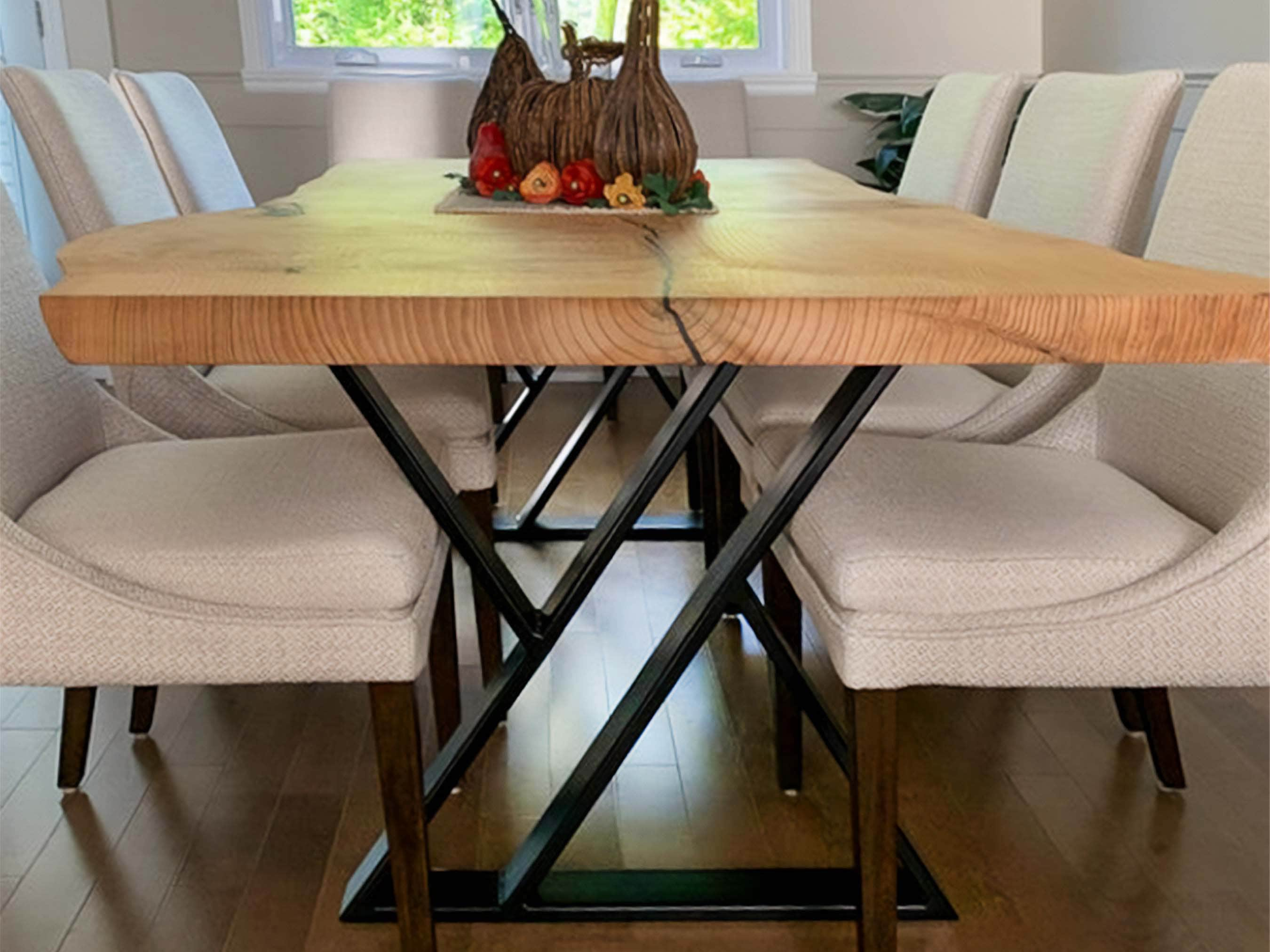Dining Room Table Legs That Incorporate Performance and Modern Design
Dining Room Table Legs That Incorporate Performance and Modern Design
Blog Article
An In-depth Look at Dining Table Leg Styles: Discovering the Suitable Suit
Choosing the appropriate table leg design is critical for both visual charm and practical capability. Conventional four legs supply timeless sophistication and stability, while the stand base gives enhanced legroom and a modern-day appearance. For those with bigger tables, trestle legs guarantee strong support, whereas barrette legs present a mid-century modern vibe with their minimalist layout. The x-shaped legs blend modern design with improved stability. Each of these alternatives brings distinct benefits, making the option more than simply a matter of preference. Explore further to find which style perfectly complements your eating room and lifestyle.
Typical 4 Legs
Among the various kinds of eating table leg designs, the standard four-leg style stays a classic option for many households. 4 legs provide balanced assistance, guaranteeing the table stays stable and qualified of bearing significant weight (dining room table legs).
From an aesthetic point of view, the typical four-leg design can be conveniently adjusted to various interior styles. Whether crafted from timber, metal, or a combination of products, these legs can be intricately carved, sleek and minimalistic, or anything in between. Their flexibility permits them to match both rustic and contemporary setups perfectly.
Moreover, the straightforward structure of the four-leg design facilitates convenience of activity and placement within an area. Unlike even more facility bases, this design lessens obstructions, providing sufficient legroom for diners. In recap, the traditional four-leg dining table leg design weds sustaining style with sensible performance, making it a sharp option for those seeking both type and feature in their eating furnishings.
Pedestal Base
Often commemorated for its sophisticated and space-efficient design, the pedestal base is a distinguished alternative to the standard four-leg arrangement in table leg styles. This distinct base commonly includes a single main column sustaining the table top, which can differ in form, from ornately carved wood to streamlined, modern-day steel. Among the main advantages of the pedestal base is its ability to maximize legroom and seating flexibility. Without edge legs, restaurants are managed higher flexibility of motion, making it a perfect choice for round and oval tables that advertise more intimate and comprehensive gatherings.
In addition, the pedestal base's central support can manage substantial weight, enabling for using heavier table tops, such as marble or thick hardwood. This toughness paired with its visual flexibility makes the pedestal base a popular choice in both conventional and modern interior settings. It can perfectly integrate with various style motifs, from traditional beauty to minimal modernity. The main column itself offers a canvas for detailed designs and imaginative expressions, find out this here adding a component of aesthetic passion underneath the table. In summary, the stand base integrates capability snappy, making it a refined and sensible alternative for varied eating atmospheres.
Trestle Legs
Trestle legs supply a robust and timeless structure for dining tables, characterized by their straight cross-bracing and strong support beams. Stemming from middle ages times, this layout has developed yet kept its essential framework, making it a perennial favorite in both standard and modern settings. The central trestle light beam, frequently sustained by 2 or even more vertical posts, uses exceptional security, enabling larger table sizes without the demand for added legs.
A considerable advantage of trestle leg tables is the ample legroom they use. Unlike tables with four corner legs, the absence of blockages at the table's edges provides unblocked space for chairs and restaurants, enhancing comfort and availability. This makes trestle tables suitable for suiting larger gatherings, whether in a dining-room or a banquet hall.
The aesthetic adaptability of trestle legs is noteworthy. Offered in a selection of materials such as timber, metal, and composite, they can be ended up to match a wide variety of indoor styles. From rustic farmhouse to streamlined contemporary layouts, trestle legs can be personalized to match individual tastes. Their enduring appeal and practical benefits make trestle legs a compelling option for those seeking both style and usefulness in their table.
Hairpin Legs

The appeal of hairpin legs exists in their simpleness and flexibility - dining room table legs. Available in an array of products, including steel and brass, they can be ended Visit Website up in many shades to match various interior designs. Whether coupled with a rustic wooden tabletop or a modern glass surface, barrette legs effortlessly blend performance with a touch of vintage beauty
Resilience is an additional significant feature of hairpin legs. Regardless of their fragile appearance, these legs are crafted to birth significant weight, making sure the table continues to be steady and safe. In addition, they are reasonably easy to mount, making them a preferred selection for DIY lovers and professional furnishings makers alike.
X-Shaped Legs

Constructed from products such as steel, timber, or a mix of both, X-shaped legs can be customized to match different design choices. Steel legs commonly provide a sleek and commercial feeling, suitable for loft-style homes and contemporary dining areas. On the various other hand, wooden X-shaped legs use a warmer, extra rustic appeal, appropriate for farmhouse or diverse interiors. The convenience in products enables homeowners to customize their table to much better fit their overall style scheme.
In addition, the engineering behind X-shaped legs makes sure also weight circulation, reducing the danger of tottering and enhancing resilience. This makes them especially fit for bigger eating tables that call for additional support. Basically, X-shaped legs blend functional design with contemporary looks, making them a timeless choice for diverse dining atmospheres.
Conclusion
A thorough understanding of dining table leg styles reveals the unique features and view publisher site advantages of each style. Trestle legs make sure durable assistance for larger tables, and barrette legs present a mid-century contemporary visual.
Report this page